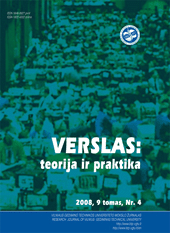EMA versus SMA Usage to Forecast Stock Markets: The Case of S&P 500 and OMX Baltic Benchmark
EMA versus SMA Usage to Forecast Stock Markets: The Case of S&P 500 and OMX Baltic Benchmark
Author(s): Svetlana Šaranda, Audrius DzikevičiusSubject(s): Economy
Published by: Vilnius Gediminas Technical University
Keywords: technical Analysis; Simple Moving Average; Exponential Moving Average; bias; S&P 500; OMX Baltic Benchmark; forecast; stock
Summary/Abstract: The academic literature is showing a growing interest in such trading rules as Moving Average. The majority of researches were made using simple moving average. Although semi-professional traders use the technical analysis methods to predict the future stock prices, to identify the stock trend changes, OMX Baltic Benchmark Index was never tested. Previous researches on the S&P 500 Index using the most widely used method of technical analysis – Moving Averages are more or less appellative. Technical analysis is opponent to classical economic theory but investors use it widely all over the world. Technical Analysis methods can be less or more effective than it was thought until nowadays. This paper compares 2 trading rules of technical analysis – exponential smoothing method and simple moving average rule. Both methods were applied to US index S&P 500 and OMX Baltic Benchmark Index and the results were compared using systematic error (mean square error, the mean absolute deviation, mean forecast error, the mean absolute percentage error) and tracking signal evaluation, bias distribution estimation and appropriate Constanta level finding for each market forecast: the case of Standard and Poor’s 500 and OMX Baltic Benchmark Index.
Journal: Verslas: teorija ir praktika
- Issue Year: 2010
- Issue No: 3
- Page Range: 248-255
- Page Count: 8
- Language: English

